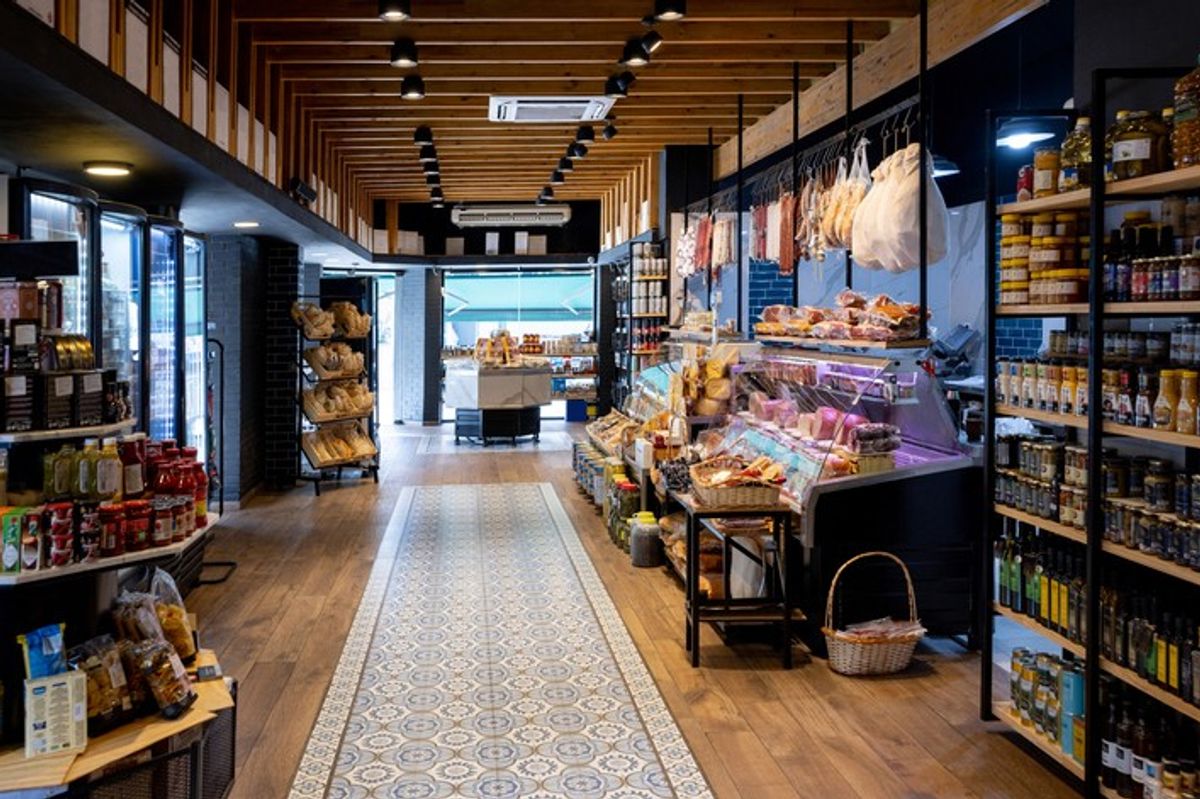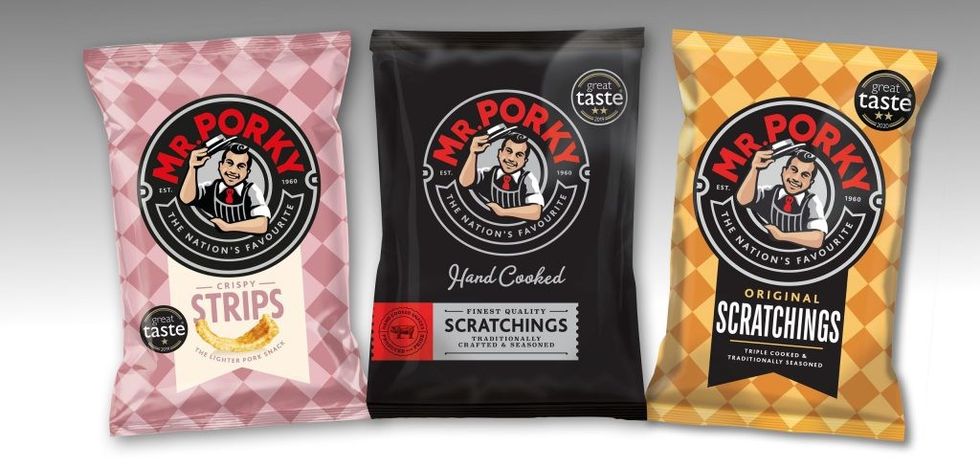In a retail landscape full of curveballs, one category continues to deliver consistent wins- food and drink-to-go. For UK convenience stores, it’s not just a bright spot; it’s becoming a vital engine of growth.
Demand for meals and beverages on the move are booming, and convenience stores are riding that wave. Whether it’s a morning coffee, a lunchtime wrap, or an afternoon pick-me-up, shoppers are leaning more and more on their local c-stores to fuel their day and they’re not just grabbing a snack, they’re boosting basket sizes while they’re at it.
This growth is part of a broader trend across food retail. The total UK food-to-go sector (which includes coffee shops, quick service restaurants and convenience stores) is forecast to reach £24 billion in 2025, up 3.3 per cent year-on-year.
It’s also becoming expected.
Today’s shoppers want their neighbourhood store to be as ready with barista-quality coffee or a hot snack as it is with milk, bread and biscuits. And those retailers who’ve made the leap by investing in coffee machines, hot food counters, and tailored meal deals are seeing tangible returns in terms of more footfall, bigger basket spends, and stronger margins.
In Glasgow, Baba’s Kitchen by Umar Majid has morphed from a c-store into a food hub, dishing out hot breakfasts, baguettes, and baked potatoes while shoppers flock to Londis Harefield for its fresh samosas, croissants, and hot dogs.
Meanwhile, Budgens Berrymoor in Wellingborough offers a mini food court experience complete with a bakery, sandwiches, Costa Coffee, and a slush machine.
Food and convenience retail industry guru and pathfinder Scott Annan strongly believes proprietary fresh food should be central to every c-store strategy. He argues that own-brand, day part-driven food and hot drinks can become a powerful USP and a real margin booster.
He strongly vouches for “proprietary, day part-fresh food and coffee and hot beverages” to drive better margins for stores as they come with margins of “60 - 100 per cent”.
Rachel Wells, Commercial Director at St Pierre Groupe comments, agrees, saying that “food to go is a major opportunity” for independent retailers.
“Consumers have got used to convenience stores’ food to go and snacking offerings being a core part of these outlets’ propositions, and shop them at all times of day, which also generates secondary spending in other parts of the store.
“The way shoppers work has normalised too, leading to stabilised, regular shopper visits. People have settled back down to going to their workplaces full time or flexi working from home, with both presenting growing opportunities for retailers to sell food and hot drinks to go,” says Wells.
Brioche and beyond
Even a basic bakery offering can boost footfall and basket spend. For amateurs, the options are many.
Leading retailers setting benchmark in food to go category, like Judith Smitham (The Old Dairy Store in Cornwall) and Ian Lewis (SPAR Minster Lovell), all swear by Country Choice for their in-store bakery needs.
With over 35 years in the game, the food-to-go wholesaler offers a reliable range of frozen, chilled, and ambient baked goods along with equipment, training, and POS support to help stores turn their bakery section into a serious profit centre.
One standout name in this space is St Pierre for its range comprising of Caramel Waffles, Millionaires Waffle, Butter Croissants, Chocolate Filled Croissants and Brioche Waffles.
Wells from St Pierre says, “Morning goods and sweet snacks from quality brands like St Pierre complement hot drinks perfectly as sweet treats at any time of day, merchandised alongside hot drinks machines, and are a great opportunity for retailers to increase basket spend.
“Indulgence is a major factor in bakery purchases, and the category continues to benefit from consumers choosing premium options, as they look for ways to treat themselves well on the move and at home.”
The St Pierre range stands out on shelf in its instantly-recognisable branded packaging and seeing it there on the bakery fixture, during their working days, will plant the idea of coming back on days when shoppers are working from home and buying St Pierre’s morning goods in multipacks for elevated breakfasts, which include Brioche Swirls, Chocolate Chip Brioche Swirls, Brioche Rolls, Chocolate Chip Brioche Rolls, Chocolate Filled Crepes, Vegan Croissants and Vegan Pains au Chocolat and St Pierre’s Brioche Buns and Hot Dog Rolls for lunch.
The strategy? Keep your morning goods visible. When hybrid workers swing by for coffee on office days, showcasing take-home packs like Brioche Swirls or Chocolate Filled Crepes can spark the idea of stocking up for WFH breakfasts too.

Premiumisation is driving bakery trends, and recognisable brands like St Pierre help shoppers trade up.
Wells adds, “In the wider bakery category, the move towards premiumisation shows no sign of slowing, and quality brands like St Pierre give consumers an opportunity to ‘trade up’ and elevate everyday meals.
“Our key marketing initiative in the past 12 months has been our ‘Eat Avec Respect’ campaign, which we ran last summer, coinciding with the barbecue season. It is now following up with the second wave, which launched on April 11th.”
Set to run for almost three months, the TV ad has been updated to increase brand visibility and recall and is accompanied by a new raft of social media activity, consumer PR, out of home and in-store execution.
Meanwhile, healthier snacking is making major strides, especially in biscuits.
Susan Nash, Trade Communications Manager at Mondelēz International, says, “As consumer interest in wellbeing is only set to continue, healthier biscuits have a very positive outlook; particularly in the independents and symbols channel where the segment is growing by 23 per cent.
“In fact, healthier biscuits now make up almost half of on-the-go sales in the channel – showing just how important it is to get this part of your range right.
At the front of the pack is belVita, the UK’s leading better-for-you biscuit brand, known for its wholegrain-rich recipes and great taste scores.
The belVita range offers a host of delicious flavours and textures, including non-HFSS recipes. With the highest scores in taste credentials within its category, belVita offers the ideal combination of taste and nutrition.
Last year, another iconic brand favourite Cadbury Brunch Choc Chip unveiled a price-marked pack (PMP) to drive brand visibility and communicate value to price-conscious shoppers.
Mastering snackonomics
Snacking and treat-led missions are firmly on the rise, and with Brits once again on the move, grazing has become the new dining.
The traditional three-meals-a-day routine is giving way to smaller, frequent eats and that’s good news for convenience stores ready to cater to those in-between cravings.
There’s no denying that Brits are firmly on the move again and when they are, they are looking for snacks to enjoy. Out of home-snacking-makes up 19 per cent (+5pp) share of all snacking occasions.
According to Nic Storey, Senior Sales Director, Impulse & Field Sales at PepsiCo, there is a significant opportunity here for retailers to capitalize on lunchtime and on-the-go occasions and encourage spend, particularly through meal deals.
Classic brands like Quavers, Wotsits, and Monster Munch continue to perform well, working hand-in-hand with flavour-led NPD to keep the range varied and sales strong.
In fact, Industry leaders are very confident about the future of the category.
Stuart Graham, Head of Convenience & Impulse at KP Snacks, says the company’s portfolio is “well-placed to drive singles recovery” by delivering flavour-packed innovation and formats that match changing shopper missions.
“At KP Snacks, we are continuing to excite and interrupt with flavoursome innovation, having the right brands in the right formats, meeting changing shopper missions as needs adapt, and building brand equity by doing the right thing.”
Weekday lunchtimes remain prime time for on-the-go eating, with 62 per cent of shoppers saying they enjoy picking meal-deal combos.
Graham notes, “It’s key that retailers offer the right core range in the right formats, backed by the right promotions and merchandising.”
Retailers should look to create value by understanding customer expectations, whether that be through premium or value offerings.
The KP Snacks portfolio delivers the top three selling meal deal SKUs – Hula Hoops Big Hoops BBQ Beef being the top-selling PMP in the convenience channel.
McCoy’s Salt & Vinegar and Flame Grilled Steak are the next best-selling meal deal choices, perfect for livening up lunch while Tyrrells is perfect for customers seeking a more premium snack.
Meanwhile, price-marked packs (PMPs) remain the heartbeat of savoury snacks. Though growth in sharing PMPs has slowed as more moved above the £1 price point, value remains king.
Brands like Golden Wonder, which have held their £1 PMP line, are outperforming the category, compared to the total market’s modest gains.
Golden Wonder Transform-A-Snack £1 PMPs are growing particularly strongly (+17 per cent) following the recent collaborations with Transformers movies.
Building on this momentum, a Beef £1 PMP flavour, which performs strongly in 50p PMP, is now available as a £1 PMP. This means the full flavour range is now available in £1 PMP – Saucy BBQ, Spicy, Cheese & Onion and Beef.
The launch of Marmite Snacks has been a major success.
Matt Smith, Marketing Director for Tayto UK explains, “The response to Marmite snacks has been fantastic. We’ve seen strong Marmite Crisps sales across all channels, including the £1.25 PMP pack in the convenience sector”.
Pork snacks are holding their own too. The category continues to outperform overall savoury snacks, driven by classic scratchings and modern formats alike.
Growth of more contemporary pork snacks has been even stronger with Mr. Porky Crispy Strips up 23 per cent as consumers look for a lighter bite with all the taste of scratching.
As the category leaders (65 per cent share), Tayto are continuing to drive awareness having just completed the category’s biggest ever campaign which was sponsoring TV coverage of PDC darts tournaments on Sky Sports.
Then there’s jerky, a rising star in the bagged snack aisle.
With fewer than one in ten households currently purchasing jerky, there is significant opportunity for further category expansion. The combination of protein-rich nutrition and great taste makes jerky a compelling snack for busy, health-conscious consumers.
According to Shaun Whelan, Jack Link’s Controller for Convenience and OOH, the key is visibility.
“Merchandise jerky alongside other bagged snacks where shoppers expect to find it,” he advises.
Meals are another major mini-segment in this aisle.
With more shoppers seeking quick yet satisfying meal options, Rustlers has become a go-to name in the chilled ready meal space and a standout in the food-to-go arena. With annual sales topping £118m, it’s not just a brand, it’s a solution.
Why? Because most food-to-go consumers have access to a microwave, whether at home, at work, or even in-store and that changes everything.
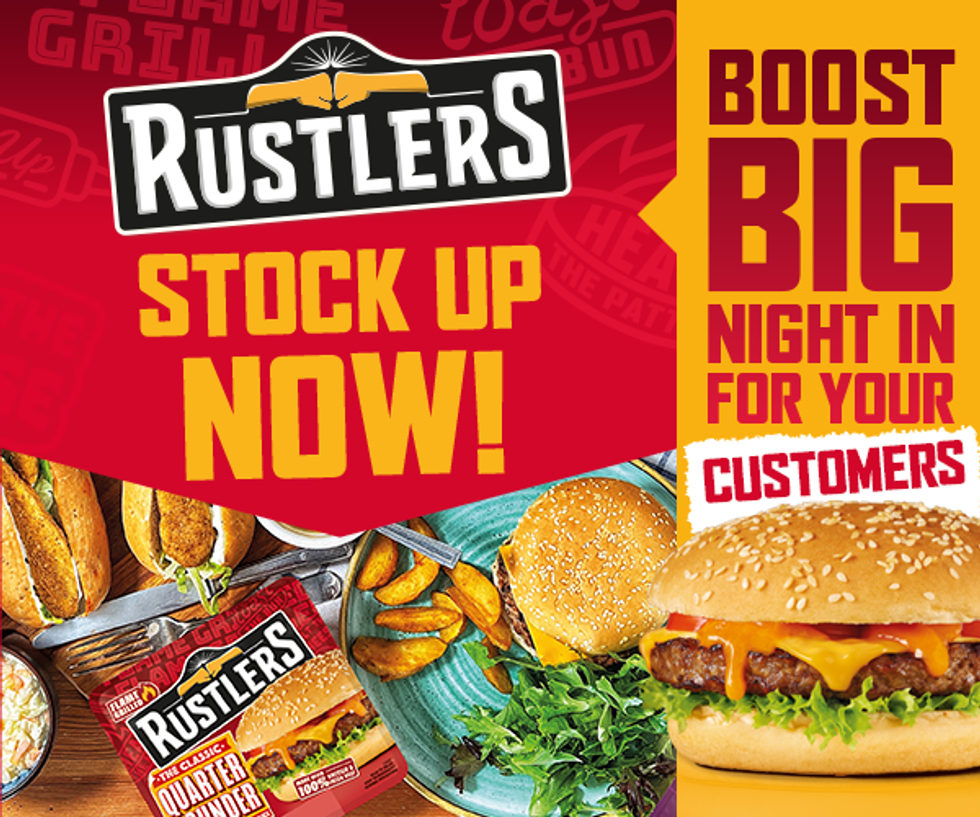
In a cost-conscious climate, affordability matters more than ever. That’s where Rustlers’ price-marked packs shine, delivering hot, convenient meals without burning a hole in the wallet.
Ross Davison, Head of Convenience at Kepak (Foods Division), home of Rustlers, shares, “Rustlers are also fuelling growth in the food-to-go market with its innovative Cook in Box range, featuring patented technology which is driving demand for Rustlers beyond chilled ready meals into the food-to-go sector.”
Pre-programmed to cook Rustlers’ best-selling SKUs in store, Rustlers-branded food-to-go units featuring microwaves are enabling c-stores to meet growing consumer demand for hot snacks on the move.
Rustlers is also highlighting the opportunity for convenience retailers to meet the rising demand for quick, convenient meal solutions among young adults.
With only 54 per cent of 19 to 22-year-olds claiming to have learnt about cooking at school, retailers are being urged to use social media to promote their food-to-go offering among so-called Gen Z shoppers.
Davison explains, “Gen Zs are more likely to view food as functional. Fifty per cent of shoppers strongly agree that food is important to them because they need it for energy, while only 38 per cent agree food is important to them for other reasons.”
Sips, shakes and sales
No food-to-go mission is complete without a drink in hand, and here convenience stores truly excel. Soft drinks are the lifeblood of impulse sales.
From colas and lemonades to energy drinks, iced coffees and smoothies, the range has exploded in recent years.
In convenience retail, soft drinks (including water, juices, etc.) are typically a top-performing category by value, and the trend toward on-the-go consumption only reinforces that.
Energy drinks deserve special mention. Brands like Red Bull, PRIME and Monster are powerhouse sellers in c-stores, fuelled by both young consumers and workers seeking a pick-me-up.
The past few years have seen double-digit growth in energy drink sales in convenience, making it a crucial sub-category of drinks-to-go. Retailers should not hesitate in expanding chiller space for these, and suppliers keep innovation flowing with new flavours.
Brits love their coffee, and more than ever, they love the convenience of grabbing one en route to work, the school run, or a quick errand.
Retailers have taken note – as in recent years, well over a third of convenience stores have installed self-serve hot drinks machines, and many others operate served coffee counters or in-store cafés.
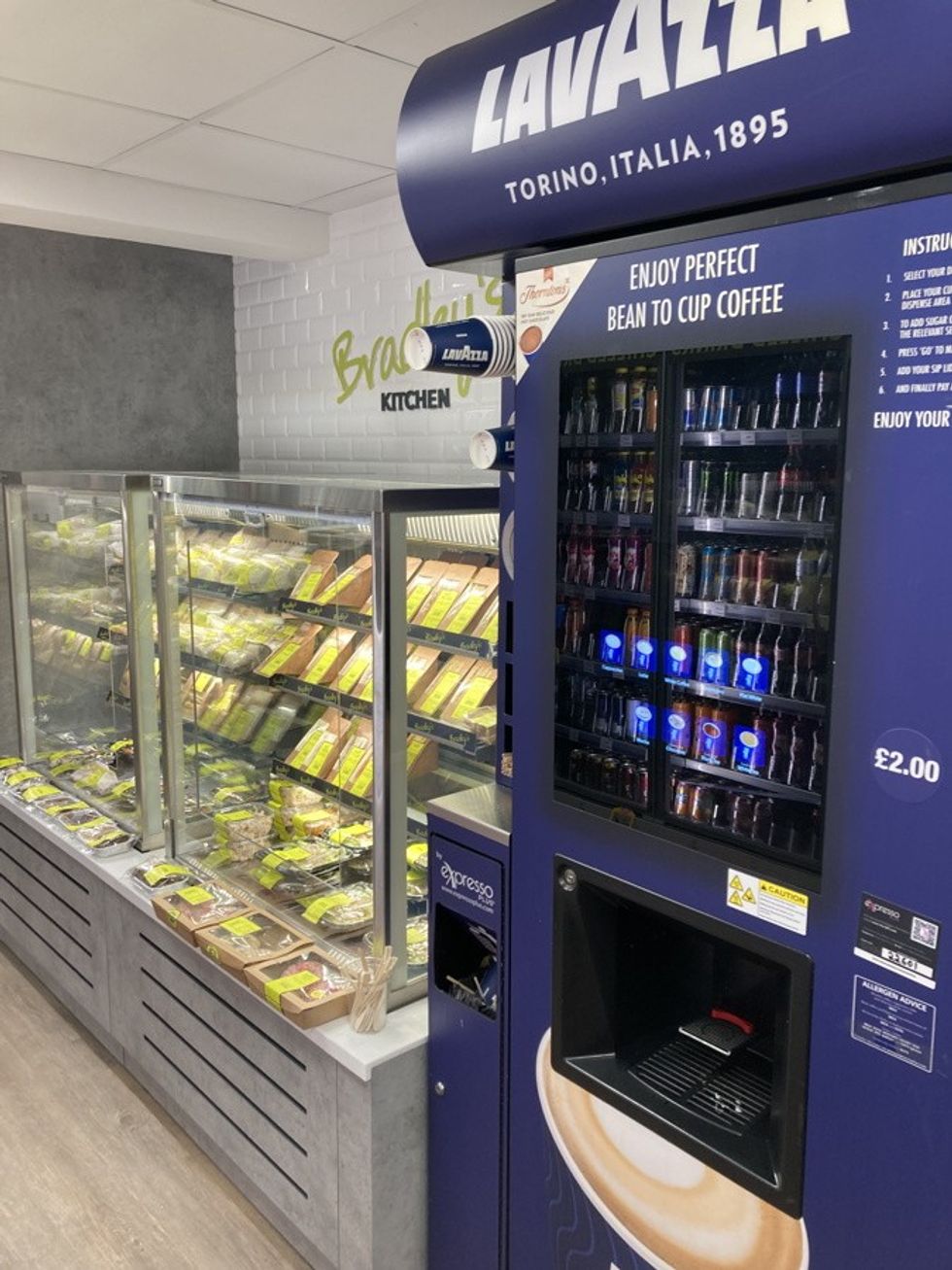
Global food-to-go expert Matt Cundrick vouches on hot beverages, particularly coffee.
As told to Asian Trader earlier, he wants retailers not to underestimate the importance of coffee in driving footfall.
“A sad-looking, poorly maintained coffee machine will likely detract from the rest of the store rather than enhance its appeal so consider the ongoing resource you will need to dedicate to upkeep and maintenance.”
The growth in hot beverages has been remarkable. Leading machine provider Costa Express (a familiar sight in forecourts and c-stores) has thousands of units across the UK, over 7,000 machines now even offer tea alongside coffee to broaden appeal.
Other suppliers like Tchibo, Lavazza, Nescafé & Go, and Seattle’s Best have placed machines in independent retailers, ensuring even the smallest shop can serve a latte or cappuccino on-the-go.
It’s not just coffee – tea, hot chocolate and other hot drinks are part of the mix. Many self-serve machines now include hot chocolate (a hit particularly in colder months or with younger shoppers), and some even dispense speciality teas or chai lattes to cater to diverse tastes.
When it comes to chilled, indulgent refreshment, flavoured milk is having a moment and convenience stores are lapping it up.
The flavoured milk category is thriving in the convenience sector, with sales up 13.8 per cent to £333.5m.
The convenience channel alone represents 44 per cent of the total category, worth £753.3m.
Chocolate-flavoured milk is outperforming the market, with over 110 million drinks sold annually. The Mars Chocolate Drinks & Treats (MCD&T) milk drinks range is a key contributor, with convenience sales up 44.1 per cent reaching £19.4 million.
Kerry Cavanaugh, general manager at MCD&T, says, “Our growth in the convenience channel reflects the strong appeal of our trusted brands and the increasing demand for flavoured milk drinks as a top pick for convenience shoppers.
“Whether consumers are grabbing a drink on the commute, during lunch or as a weekend treat, we’ve found that strong branding, trusted flavours and varied formats are key to driving impulse purchases.”
While many flavoured milk drinks are ambient to support easy stock management for retailers, chilled options remain crucial to attracting customers seeking a quick, ready-to-drink refreshment.

The MCD&T range includes Mars, Mars Caramel, Maltesers, Milky Way, Twix, Snickers, M&M’s Brownie and Galaxy, all suitable for vegetarians and containing no added sugar.
Another notable trend is experimentation and novelty, which ties into seasonal marketing.
Brands are keeping things fresh with limited editions and innovative flavours. A great example is the rise of quirky limited-time beverages – such as Jimmy’s Iced Coffee launching a donut-flavoured iced latte as a fun, indulgent morning option.
Such innovations appeal to younger consumers (Gen Z in particular) and can drive buzz and impulse purchases.
Come summer, nothing beats the pull of a frosty drink and c-stores are stepping up.
Frozen slushies and milkshakes have become retail gold, especially among kids and teens. Machines like Slush Puppie and Tango Ice Blast are now staples, offering not just colour and chill, but serious profit margins.
Moreover, some stores have taken frozen beverages up a notch with premium blended milkshake machines such as f’real.
Smoothies and frappés prepared in-store can also be an extension of a coffee offer if retailers invest in blenders and fresh/frozen fruit ingredients. Like, Premier Mo's Blantyre in Glasgow has a Roxy’s Dessert Bar that offers a variety of milkshakes, a huge hit among the locals.
Fresh picks and newbies
Stocking the classics is a must, but sprinkling in newness is what keeps a convenience store offer fresh and exciting. Shoppers love surprises, and the latest NPD in snacks is serving them up in spades.
Building on the success of Marmite Crisps, in April, Tayto are launching Cheese and Marmite Puffs in £1.25 PMP pack.
As Smith from Tayto explains, “Cheese and Marmite on toast is a go-to for Marmite fans and so this is a very familiar flavour. It will also bring new consumers into the brand as those that are less sure about Marmite are more likely to try it when paired with cheese.”
PepsiCo isn’t holding back either. From Extra Flamin’ Hot lines to Walkers x Heinz and Smokin' BBQ Sauce, its range taps into the UK’s growing love for spiciness.
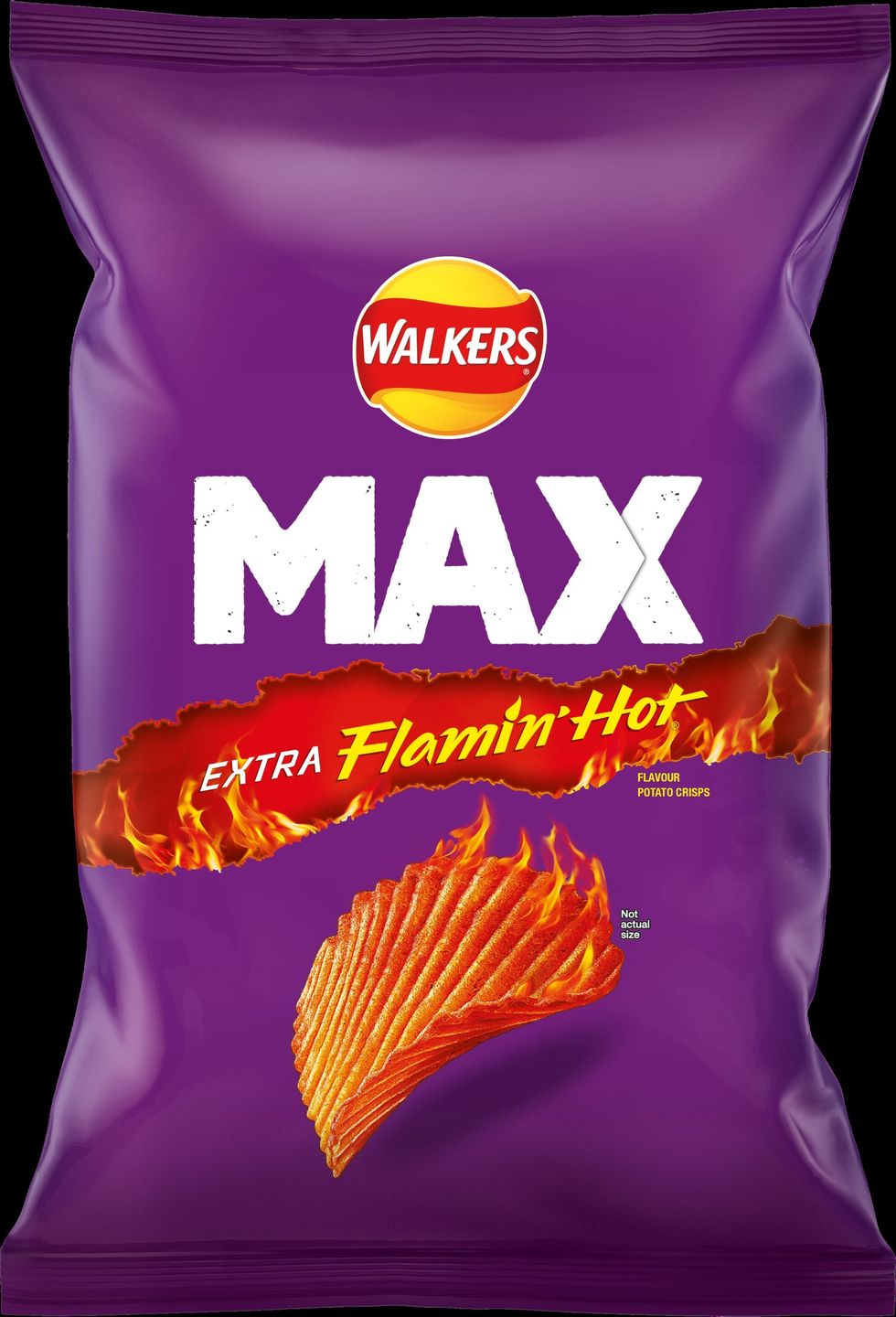
Last year, PepsiCo launched its new Extra Flamin’ Hot range, with three spicy additions being made to some of the nation’s most loved brands – Doritos, Walkers MAX and Wotsits Crunchy.
Walkers joined forces with the nation’s favourite ketchup brand, Heinz, to deliver the iconic, rich tomato flavour that consumers know and love.
It follows on from the brand’s collaboration with Heinz last year to create three limited-edition sandwich inspired flavours.
The NPD is available in a range of formats, including a 45g grab bag (RSP: £1.10), 70g PMP (RSP: £1.25) and 6pk multipack (RSP: £2.00).
PepsiCo brought further excitement to the savoury snacking category with the launch of another fan favourite flavour.
Walkers Smokin’ BBQ Sauce joined the Walkers’ core line-up, helping retailers meet shopper preferences for their favourite flavours whilst encouraging them to trade up with Britain’s most loved crisp brand.
The NPD is available in a variety of formats, including a 45g grab bag (RSP: £1.00), 6pk multipack (RSP: £2.00) and 70G PMP (RSP: £1.25).
Storey from PepsiCo also believes in giving space to new launches.
“With enjoyment being the number one driver of choice when buying crisps and snacks, retailers should stock popular brands and flavours in formats suited to lunch and on the go, as well as offering the latest NPD in bold and exciting flavours to cater to this need for enjoyment whilst diversifying their range with something for everyone,” he says.
Flavour-led innovation is also shaking up meat snacks. Mr. Porky just introduced English Mustard Crispy Strips – a nod to the classic ham-and-mustard combo.
Smith at Tayto Group explains, “Crispy Strips are bringing new consumers into the category by having all the flavour of traditional scratchings but with a lighter, crispy bite - making them an easier eat.
“Our research shows that seven out of 10 pork snackers are interested in flavoured pork snacks - mustard being the preferred flavour ahead of BBQ, Chorizo, Salt & Vinegar, Hot & Fiery Chilli, Sweet Chilli and Chilli Pepper.”
While pork snacks are increasingly popular amongst consumers looking for high protein, low carb options, some consumers are put off by the texture or appearance of more traditional scratchings and strips.
Listening to the consumer feedback, Mr. Porky has created the crunchy – yet airy – Mr. Porky Puffs 25g (RRP £1.59).
Smith says, “Meat snacks have long been a go-to solution for consumers looking for a high protein snack, Mr. Porky Puffs is the unique alternative to more traditional scratchings.
“We have been making scratchings since 1960, using only the best rind of the pig and dusted with a generous helping of our signature salty seasoning - every batch as good as our first.
“And to celebrate over 65 years of scratchings expertise, we are expanding our offering with some exciting new products and formats.”
The Mr. Porky range is available in various of formats including SRP and clip-strips (which are perfect for capturing its many eating occasions by hanging the clips near energy or soft drinks as well as the snacks aisle, the lunch to-go section and the beer wines and spirits aisles), providing a great opportunity to drive high profit, VAT-free incremental sales.
Peperami is joining the momentum with new £1 PMP Chicken Bites in Roasted and Tikka flavours. With just 95 kcal per 45g pack, these snacks are protein-rich, satisfying, and perfectly tailored to the food-to-go shopper.
Trends to follow
From premium bakery to spicy crunch, food-to-go isn’t one-size-fits-all. Retailers succeeding here are those who understand their shoppers' missions and tailor the experience to meet them.
Continental bakery items have been in the top three fastest growing bakery categories since 2019.
The St Pierre range means consumers can enjoy an “upgraded” menu with continental-style breakfasts, brunches and lunches.
Its croissants, brioche, and waffles bring an elevated touch to breakfast and lunch runs. The strategy? Place these morning goods near hot drinks machines and keep them visible for repeat purchase cues.
The move towards premiumisation hasn’t slowed in this staple category, and premium brands like St Pierre give consumers an affordable opportunity to trade up and elevate their everyday meals, including on the move.
Savvy retailers looking at the food to go opportunity should take cues from foodservice and think about who their likely customers are, and how to engage them and provide reasons for consumers to choose their outlet.
Retailers should focus their food to go offerings on two key missions, the morning run and lunchtime.

The morning run presents a clear opportunity to merchandise a range of morning goods near the hot drinks dispenser and use the strength of the St Pierre brand to draw shoppers back to the store on repeat visits and increase their linked food to go sales in other product categories during these occasions.
Value still matters. PMPs are thriving, offering transparent value and reassuring price points.
Graham from KP Snacks says, “We’ve seen a recent increase in grab bag and large PMP sales as people are tempted by the bigger packs.
“Not only do PMPs offer consumers great value for money, the clear pricing also gives them assurance that they are not being over charged.
“PMPs are a hugely versatile format that caters for multiple missions and occasions, whether that be hunger fill or sharing. 70 per cent of shoppers purchase items on impulse and PMPs drive these sales through clear messaging and displays.”
Worth £109m, the KP Snacks portfolio of large format PMPs is extensive, designed to excite shoppers and drive impulse purchases. KP Snacks also offers a range of delicious snacks in smaller PMP formats.
Healthy snacking is also picking up steam.
Exempt from HFSS legislation, nuts, with their natural and functional benefits, are seeing huge growth. Packed with protein and fibre which is highlighted through its labelling, KP Nuts is the number-one brand in nuts, nearly five times bigger than the nearest branded competitor.
Coming in at under 100 calories per serving, suitable for vegetarians and vegans, and with a third less fat than the market leader, popchips also provides a more permissible snack option without compromising on big flavour.
Boosting sales
Want to drive more food-to-go sales? Start with visibility. Secondary siting near tills, coffee machines, or lunch chillers can quadruple purchase likelihood for snacks.
Storey from PepsiCo says, “Retailers should put best sellers at eye line as this can drive up to 38 per cent more sales vs being on the bottom shelf, particularly as those shoppers on-the-go are less likely to have time to browse an entire range, so will be looking for those easy-to-find, best-selling snacks.
“Displays in store, especially nearer the till, play a key role for purchasing with 35 per cent of purchases in the savoury snacks category made from these displays.
“However, retailers should remain mindful of HFSS legislation and prioritise products that adhere to these rules by stocking non-HFSS products such as the Walkers Yummy-With and Walkers x Heinz lunch range.”
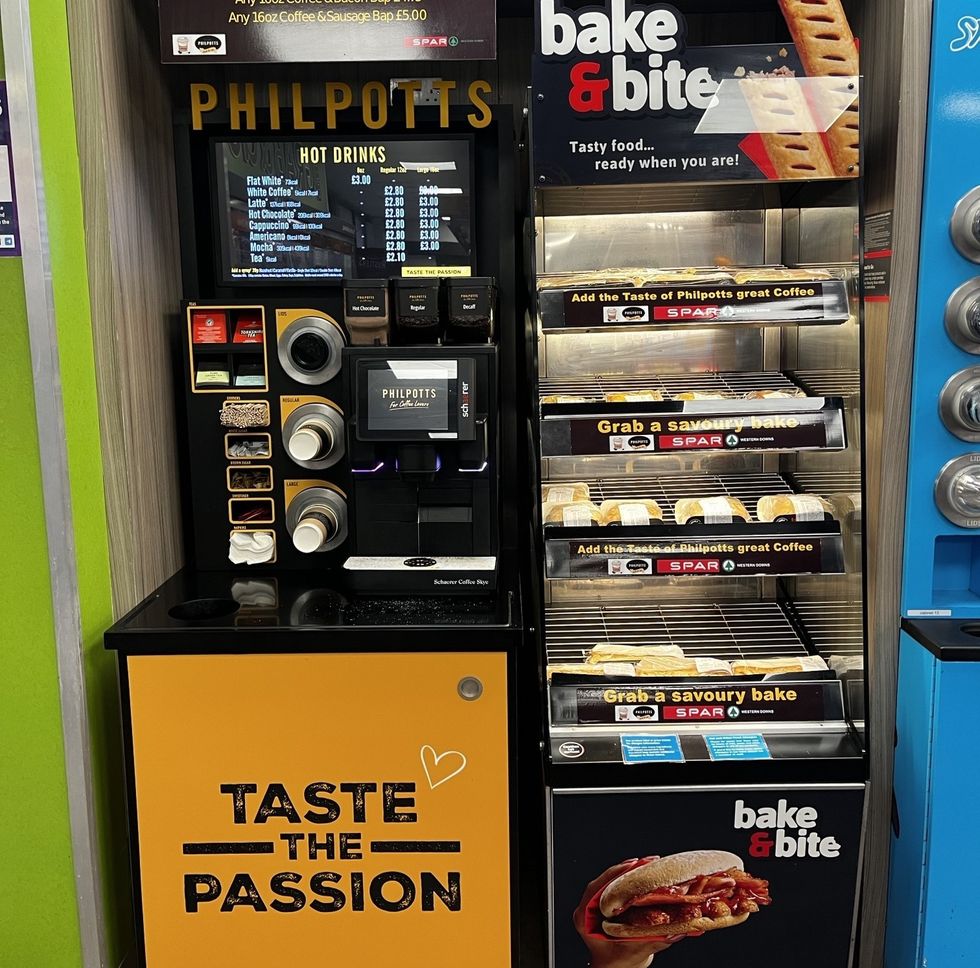
Sharing PMPs remain the core of category having been the main driver of growth but this has slowed as many brands have moved above £1. In contrast, Golden Wonder has remained at £1 and continues to outperform total snacks..
Smith from Tayto UK explains Golden Wonder’s success: “We know how important the £1 price-point is to both consumers and retailers. By sticking to this key price-point we have continued to deliver great tasting, great value snacks with strong retailer margins.”
With 64 per cent of consumers willing to switch brands for a lower price, the opportunity to profit from Golden Wonder’s £1 PMP has never been greater.
Shoppers are time and cash poor, so merchandising should be focused on helping them make quick decisions. Think about missions – site snacks with other categories on the same mission to increase basket size.
The secret sauce
Seasonality plays a massive role in shaping demand. Summer calls for smoothies, iced lattes, and chilled treats. Winter ups the game for hot drinks, hearty soups, and warming snacks.
And there's still room for indulgence. Premiumisation is alive and well. Many shoppers are happy to pay more for that artisan sourdough sandwich or single-origin coffee. Everyday luxuries, even in a c-store, matter.
Additionally, demand for options like protein-rich snacks or low-sugar smoothies are rising as customers try to stick to their fitness goals on the move.
As food-to-go expert Gavin Rothwell notes, working with well-known brands can “provide a good route, adding instant credibility to the offer”.
Food and beverages-to-go have transitioned from a fringe offering in convenience stores to an essential pillar of the business. In a time when retailers are challenged by everything from supermarket discounting to online delivery, a standout food-to-go selection can add not only to footfall and sales but also to the store’s branding and unique identity.
The fact that food and beverages to go come with better margin (or rather better control on margins), it only adds cherry to this cake.
As retail expert Annan passionately advises, “proprietary fresh Food to Go is the only category that can increase customer visits, store margin and associated impulse sales” for independents in a declining market.




